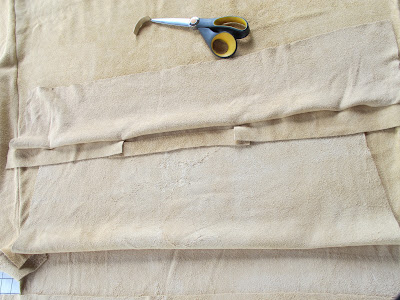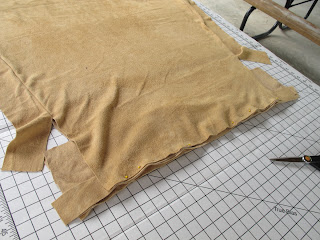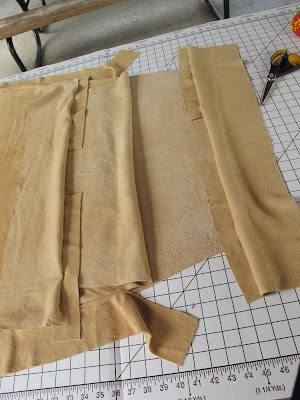 |
| The Muse, She's usually naked. Distracting, I'd think... |
For more details from an Iban woman's perspective, check out:
"Songs of my Foremothers"The definitive, classic pua kumbu
This particular quote struck me hard in the face:
"The more powerful a design, the closer it brings an Iban to the spiritual world, and the more dangerous it is for her to create, for she is actually summoning the spirits, ancestors and beings she is portraying and weaving them into her work. As the shaman serves as mouthpiece for ancestor and guide spirits, the Iban weaver is a channel or vessel for the sacred speech she weaves, and in so doing becomes a sort of demi goddess herself."
I have been experiencing precisely this very thing, it doesn't feel as if I am communing with or assuming a Deity of any kind, it's more like being driven to do something without knowing why, as if you can hear a voice no one else can and you simply must act on the suggestion or pay a large price emotionally.
When I was recreating a 300 year old Native dress I had no idea how I was going to close the shoulder and as I was musing on it I suddenly found my hands moving and making the difficult stitching with ease, I was done before I even realized I had begun. "It begins Thus.." I clearly heard in my mind.
I remember turning to my Husband an telling him that if this was possession, I guess it is not such a bad thing.....until I had to take time down to attend other business.
Suddenly I was depressed and angry, as if not of my own accord. I felt frustrated and bewildered in trying to attend to modern things, as if I had forgotten how to function in the modern world.
I finally called a truce with the force, promising it my full attention when I could return to the tasks laid before me by this persistent Ancestor.
It's almost as if someone is living Rent Free in my heart and is petulant if I try to have my own way. I don't feel endangered at all by this habitation, in fact, I have been able to experience some remarkable moments of clarity about how this Person, (as She once was), lived and functioned in Her own time. This is well worth the price of having another voice adding it's opinion to my endeavors.
I understand her impatience, after all, I am also human and may eventually pass without getting across what this messenger brings me. She feels it is important enough to hijack my thought process and as I learn I am beginning to agree.
It's like two people from completely different worlds trying to have an important conversation without the commonality of language.
I could be completely delusional, I am, after all, a Very Rational Person, (or VRP of the Doubting Thomas Type), who doesn't know quite if I should believe what is happening to me.
It could be great hubris on my part, perhaps I want to so much I am summoning it out of my need to succeed at something original and difficult for anyone else to comprehend. Who Knows?
For now I am content to be On Board for the Great Adventure, Crazy as a Loon or not, as it intrigues me to no end to be on the receiving end of knowledge I have no rational explanation for it's existence in my mind.
Life is a strange thing.
I thank you for this article, it perhaps is the first time I have read of an explanation for what happens to me and I would like to think it is real...I have been compulsed at certain times of my life to get tattoos and designed them myself, I don't talk about them or show them, they are just for me. Makes one think....even one like myself, who does not believe in such things, and yet I do ponder on this poorly staged Great Pageantry we call Life.
I am no stranger to ordinary superstitious fear, having almost lost my spark of life several times only to regain my strength and continue on my path after beseeching any and all supposed Creators for more time to finish what I must do. I imagine we are all overblown with our own importance.
There isn't much that can frighten me now, It's pretty much all happened to me so there are few surprises lurking in my closet, other than the fear that someone I care for will be cut short on their own journey and their song left unsung. I so hate a Bad Ending.
After considering all things I am left with the knowledge that can only try to muddle about towards my addled sense of blind destiny, grasping at the invisible hands that beckon me hither and bid me look and learn.
Not a bad thing really. I could be an avid Golfer. Now That's Crazy!
I've prattled on long enough, I hope maybe I'll find someone who, like me, is more knowledgeable and can help me on my way, it is, after all, a bit strange...living this unearthly way. until then I great comfort in the idea that All Will Presently Be Revealed, (Or they will finally lock me up).



















































